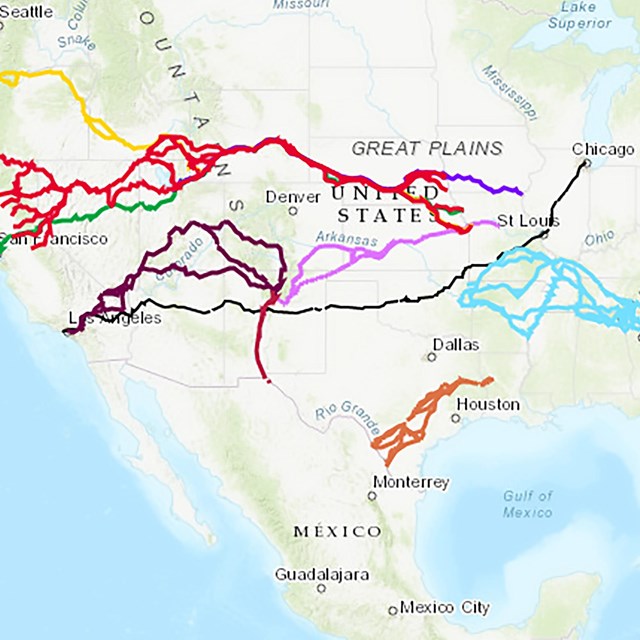Last updated: January 26, 2021
Article
Santa Fe Trail and Economic Downturns

The United States has endured recessions before. More than two centuries ago, the United States began sinking into what one economic historian calls “the first great depression.” After the War of 1812, rampant speculation in western lands—fueled by easy access to credit, record-high grain and cotton prices, and the end of the Indian wars—masked the initial signs of an economic downturn. Many state-chartered banks across America printed banknotes with little hard currency to back them. The Second Bank of the United States, eager to turn a profit for its stockholders, initially did nothing to stop this unsustainable borrowing; however, in the summer of 1818, it suddenly demanded repayment of debts and refused to accept banknotes not backed by gold or silver. Banks and businesses failed around the nation, and the Panic of 1819 was born.
Rampant land speculation in Missouri produced a boom—and then a bust. Land prices soared, and many new landowners bought their properties on credit; by the end of 1820, Missourians were over $2 million in debt to the federal government. In the summer of 1821 one particularly debt-ridden Missourian, William Becknell, began to look westward for a solution to his financial problems. After leaving for Santa Fe that September, Becknell returned to his hometown of Franklin in January of 1822; one bystander recalled seeing “rawhide packages of silver dollars…dumped on the sidewalk.”
Becknell had stumbled upon something mutually beneficial. The citizens of New Mexico, recently freed from Spain’s restrictive trade policies, no longer had to purchase expensive goods shipped from the royal port at Vera Cruz; conversely, Missouri’s merchants got a chance to unload excess goods they had accumulated during the Panic of 1819. The infusion of Mexican silver was particularly important for Missouri, as its banking system had recently collapsed. It seemed that Becknell had discovered what one historian calls “a 19th-century economic stimulus package.” The Santa Fe Trail helped sustain the state until the creation of the Bank of Missouri in 1837, which became recognized as one of the soundest in the nation—largely because of the immense amounts of Mexican silver that Santa Fe traders had deposited there.
Stephen Aron, American Confluence: The Missouri Frontier from Borderland to Border State (Bloomington: University of Indiana Press, 2006), 188.
Andrew H. Browning, The Panic of 1819: The First Great Depression (Columbia: University of Missouri Press), 5-7.
Michael Dickey, “A 19th-Century Economic Stimulus Package: The Santa Fe Trail,” Wagon Tracks 24, no. 2 (February 2010): 12-15.


